Research on Peak Load Prediction of Distribution Network Lines Based on Prophet-LSTM Model
Abstract
1. Introduction
- In this paper, a Prophet-LSTM-based load forecasting method is proposed, learning data trends based on the Prophet model to improve the data trend fit, while using the high prediction accuracy of LSTM model for prediction, and further improving the prediction results through the BP network to improve the prediction accuracy and effectiveness of the model.
- In Prophet model training, we optimize the parameters of the Prophet model based on PSO (particle swarm optimization algorithm), which can better capture the data mutation points.
- A complete set of experiments was designed to compare the forecasting method proposed in this paper with common forecasting methods, and to demonstrate that the method proposed in this paper can achieve better forecasting results compared with other methods.
2. Related Work
2.1. Traditional Forecasting Models
2.2. Machine Learning
2.3. Deep Learning
2.4. Summary
3. Research Theory and Methodology
3.1. Prophet Model
3.2. PSO Method
3.3. LSTM Model
4. Model Construction and Prediction
4.1. Prophet Model Construction
4.2. LSTM Model Construction
4.3. Prophet-LSTM Combined Model
5. Conclusions
Author Contributions
Funding
Institutional Review Board Statement
Informed Consent Statement
Data Availability Statement
Conflicts of Interest
References
- Grabner, M.; Wang, Y.; Wen, Q.; Blažič, B.; Štruc, V. A Global Modeling Framework for Load Forecasting in Distribution Networks. IEEE Trans. Smart Grid 2023, 14, 1476–1484. [Google Scholar] [CrossRef]
- Chen, H.; Zhang, B.; Geng, H.; Wang, M.-M.; Gao, H. Demand Response during the Peak Load Period in China: Potentials, Benefits and Implementation Mechanism Designs. Comput. Ind. Eng. 2022, 168, 108117. [Google Scholar] [CrossRef]
- Chen, H.; Yan, H.; Gong, K.; Yuan, X.-C. How will Climate Change Affect the Peak Electricity Load? Evidence from China. J. Clean. Prod. 2021, 322, 129080. [Google Scholar] [CrossRef]
- Zhang, M.; Sun, Q.; Yang, X. Research on the Assessment of the Capacity of Urban Distribution Networks to Accept Electric Vehicles Based on the Improved TOPSIS Method. IET Gener. Transm. Distrib. 2021, 15, 2804–2818. [Google Scholar] [CrossRef]
- Lanka, V.V.S.; Roy, M.; Suman, S.; Prajapati, S. Renewable Energy and Demand Forecasting in an Integrated Smart Grid. In Proceedings of the 2021 Innovations in Energy Management and Renewable Resources (IEMRE), Online Conference, 25–26 March 2021; pp. 1–6. [Google Scholar]
- Panda, S.K.; Jagadev, A.K.; Mohanty, S.N. Forecasting Methods in Electric Power Sector. Int. J. Energy Optim. Eng. 2018, 7, 1–21. [Google Scholar] [CrossRef]
- Niu, D.; Ji, Z.; Li, W. Research and application of a hybrid model for mid-term power demand forecasting based on secondary decomposition and interval optimization. Energy 2021, 234, 121145. [Google Scholar] [CrossRef]
- Nti, I.K.; Teimeh, M.; Nyarko-Boateng, O.; Adekoya, A.F. Electricity load forecasting: A systematic review. J. Electr. Syst. Inf. Technol. 2020, 7, 13. [Google Scholar] [CrossRef]
- Liu, Z.; Zhu, Z.; Gao, J.; Xu, C. Forecast Methods for Time Series Data: A Survey. IEEE Access 2021, 9, 91896–91912. [Google Scholar] [CrossRef]
- Guo, W.; Che, L.; Shahidehpour, M.; Wan, X. Machine-Learning Based Methods in Short-Term Load Forecasting. Electron. J. 2021, 34, 106884. [Google Scholar] [CrossRef]
- Lim, B.; Zohren, S. Time-Series Forecasting with Deep Learning: A Survey. Philos. Trans. R. Soc. A 2021, 379, 2020A0209. [Google Scholar] [CrossRef]
- Haben, S.; Giasemidis, G.; Ziel, F. Short term load forecasting and the effect of temperature at the low voltage level. Int. J. Forecast. 2019, 35, 1469–1484. [Google Scholar] [CrossRef]
- Weron, R. Modeling and Forecasting Electricity Loads and Prices: A Statistical Approach; Wiley: Hoboken, NJ, USA, 2007; Volume 403. [Google Scholar]
- Box, G.E.P.; Jenkins, G.M. Time series analysis: Forecasting and control. J. Time Ser. Anal. 2010, 31, 249–250. [Google Scholar]
- Zhu, X.; Shen, M. Based on the ARIMA Model with Grey Theory for Short Term Load Forecasting Model. In Proceedings of the 2012 International Conference on Systems and Informatics (ICSAI2012), Yantai, China, 19–20 May 2012; pp. 564–567. [Google Scholar] [CrossRef]
- Gupta, A.; Kumar, A. Mid Term Daily Load Forecasting using ARIMA, Wavelet-ARIMA and Machine Learning. In Proceedings of the 2020 IEEE International Conference on Environment and Electrical Engineering and 2020 IEEE Industrial and Commercial Power Systems Europe (EEEIC/I&CPS Europe), Madrid, Spain, 9–12 June 2020; pp. 1–5. [Google Scholar] [CrossRef]
- Yin, C.; Liu, K.; Hu, K.; Yang, Z.; Yang, L.; Zhao, N. SARIMA-Based Medium- and Long-Term Load Forecasting. Strateg. Plan. Energy Environ. 2023, 42, 283–306. [Google Scholar] [CrossRef]
- Shilpa, G.N.; Sheshadri, G.S. Electrical Load Forecasting Using Time Series Analysis. In Proceedings of the 2020 IEEE Bangalore Humanitarian Technology Conference (B-HTC), Vijiyapur, India, 8–10 October 2020; pp. 1–6. [Google Scholar] [CrossRef]
- Jiang, H.; Zhang, Y.; Muljadi, E.; Zhang, J.J.; Gao, D.W. A Short-Term and High-Resolution Distribution System Load Forecasting Approach Using Support Vector Regression with Hybrid Parameters Optimization. IEEE Trans. Smart Grid 2018, 9, 3341–3350. [Google Scholar] [CrossRef]
- Hou, K.; Shao, G.; Wang, H.; Zhang, Q.; Yan, W. Research on Practical Power System Stability Analysis Algorithm Based on Modified SVM. Prot. Control Mod. Power Syst. 2018, 3, 11. [Google Scholar] [CrossRef]
- Lu, H.; Azimi, M.; Iseley, T. Short-Term Load Forecasting of Urban Gas Using a Hybrid Model Based on Improved Fruit Fly Optimization Algorithm and Support Vector Machine. Energy Rep. 2019, 5, 666–677. [Google Scholar] [CrossRef]
- Sun, W.; Pang, X.; Liu, W.; Wang, Y.; Luan, C. Short-term Power Load Forecasting Based on Grey Relational Analysis and Support Vector Machine. In Proceedings of the 2022 4th International Conference on Industrial Artificial Intelligence (IAI), Shenyang, China, 24–27 August 2022; pp. 1–5. [Google Scholar]
- Liu, S.; Zhang, L.; Xia, H. Research on Power Load Prediction Based on Elman Network with Improved Particle Swarm Optimization. J. Phys. Conf. Ser. 2022, 2338, 012076. [Google Scholar] [CrossRef]
- Chen, Y.; Xu, P.; Chu, Y.; Li, W.; Wu, Y.; Ni, L.; Bao, Y.; Wang, K. Short-Term Electrical Load Forecasting Using the Support Vector Regression (SVR) Model to Calculate the Demand Response Baseline for Office Buildings. Appl. Energy 2017, 195, 659–670. [Google Scholar] [CrossRef]
- Barman, M.; Dev Choudhury, N.B.; Sutradhar, S. A Regional Hybrid GOA-SVM Model Based on Similar Day Approach for Short-Term Load Forecasting in Assam, India. Energy 2018, 145, 710–720. [Google Scholar] [CrossRef]
- Uriarte, R.B.; Tiezzi, F.; Tsaftaris, S.A. Supporting Autonomic Management of Clouds: Service Clustering with Random Forest. IEEE Trans. Netw. Serv. Manag. 2016, 13, 595–607. [Google Scholar] [CrossRef]
- Wu, X.; He, J.; Zhang, P.; Hu, J. Power System Short-Term Load Forecasting Based on Improved Random Forest with Grey Relation Projection. Dianli Xitong Zidonghua/Autom. Electr. Power Syst. 2015, 39, 50–55. [Google Scholar]
- Xu, H.; Fan, G.; Kuang, G.; Song, Y. Construction and Application of Short-Term and Mid-Term Power System Load Forecasting Model Based on Hybrid Deep Learning. IEEE Access 2023, 11, 37494–37507. [Google Scholar] [CrossRef]
- Cui, G.; Song, D.; Yu, S.; You, Y. Medium-Term Load Prediction Based on GALightGBM-LSTM. In Proceedings of the 2022 9th International Forum on Electrical Engineering and Automation (IFEEA), Zhuhai, China, 4–6 November 2022; pp. 1–5. [Google Scholar] [CrossRef]
- Kumar, S.; Hussain, L.; Banarjee, S.; Reza, M. Energy Load Forecasting using Deep Learning Approach-LSTM and GRU in Spark Cluster. In Proceedings of the 2018 Fifth International Conference on Emerging Applications of Information Technology (EAIT), Dehradun, India, 27–28 October 2018; pp. 1–4. [Google Scholar]
- Cui, C.; He, M.; Di, F.; Lu, Y.; Dai, Y.; Lv, F. Research on Power Load Forecasting Method Based on LSTM Model. In Proceedings of the 2020 IEEE 5th Information Technology and Mechatronics Engineering Conference (ITOEC), Chengdu, China, 28–30 August 2020; pp. 1657–1660. [Google Scholar]
- Motepe, S.; Hasan, A.N.; Stopforth, R. Improving Load Forecasting Process for a Power Distribution Network Using Hybrid AI and Deep Learning Algorithms. IEEE Access 2019, 7, 82584–82598. [Google Scholar] [CrossRef]
- Li, C.; Chen, Z.; Liu, J.; Li, D.; Gao, X.; Di, F.; Li, L.; Ji, X. Power Load Forecasting Based on the Combined Model of LSTM and XGBoost. In Proceedings of the 2019 the International Conference on Pattern Recognition and Artificial Intelligence, Wenzhou, China, 19–22 July 2019; Association for Computing Machinery: New York, NY, USA, 2019; pp. 46–51. [Google Scholar]
- Pham, M.H.; Nguyen, M.N.; Wu, Y.K. A Novel Short-Term Load Forecasting Method by Combining the Deep Learning With Singular Spectrum Analysis. IEEE Access 2021, 9, 73736–73746. [Google Scholar] [CrossRef]
- Ciechulski, T.; Osowski, S. High Precision LSTM Model for Short-Time Load Forecasting in Power Systems. Energies 2021, 14, 2983. [Google Scholar] [CrossRef]
- Xu, Y.; Feng, Y. Short-Term Power Load Forecasting Based on Deep Learning. Master’s Thesis, School of Electrical Engineering and Computer Science, Stockholm, Sweden, 2022. [Google Scholar]
- Singh, R.P.; Gao, P.X.; Lizotte, D.J. On hourly home peak load prediction. In Proceedings of the 2012 IEEE Third International Conference on Smart Grid Communications (SmartGridComm), Tainan, Taiwan, 5–8 November 2012; pp. 163–168. [Google Scholar]
- Nag, A.; Ranjan, R.; Vinoth Kumar, C.N.S. An Approach on Cyber Crime Prediction Using Prophet Time Series. In Proceedings of the 2022 IEEE 7th International Conference for Convergence in Technology (I2CT), Mumbai, India, 7–9 April 2022; pp. 1–5. [Google Scholar]
- Parizad, A.; Hatziadoniu, C.J. Using Prophet Algorithm for Pattern Recognition and Short Term Forecasting of Load Demand Based on Seasonality and Exogenous Features. In Proceedings of the 2020 52nd North American Power Symposium (NAPS), Virtual, 11–14 April 2021; pp. 1–6. [Google Scholar]
- Lv, L.; Luo, L.; Yang, Y. Distribution Line Load Predicting and Heavy Overload Warning Model Based on Prophet Method. Sustainability 2022, 14, 13697. [Google Scholar] [CrossRef]
- Korstanje, J. The Prophet Model. In Advanced Forecasting with Python: With State-of-the-Art-Models Including LSTMs, Facebook’s Prophet, and Amazon’s DeepAR; Apress: Berkeley, CA, USA, 2021; pp. 253–272. [Google Scholar]
- Kennedy, J.; Eberhart, R. Particle Swarm Optimization. In Proceedings of the ICNN’95—International Conference on Neural Networks, Perth, WA, Australia, 27 November–1 December 1995; Volume 4, pp. 1942–1948. [Google Scholar] [CrossRef]
- Xia, M.; Shao, H.; Ma, X. A Stacked GRU-RNN-Based Approach for Predicting Renewable Energy and Electricity Load for Smart Grid Operation. IEEE Trans. Ind. Inform. 2021, 17, 7050–7059. [Google Scholar] [CrossRef]
- Jiang, W. Deep Learning Based Short-Term Load Forecasting Incorporating Calendar and Weather Information. Internet Technol. Lett. 2022, 5, 383. [Google Scholar] [CrossRef]
- Wang, C.; Wang, Y.; Ding, Z. A Transformer-Based Method of Multienergy Load Forecasting in Integrated Energy System. IEEE Trans. Smart Grid 2022, 13, 2703–2714. [Google Scholar] [CrossRef]

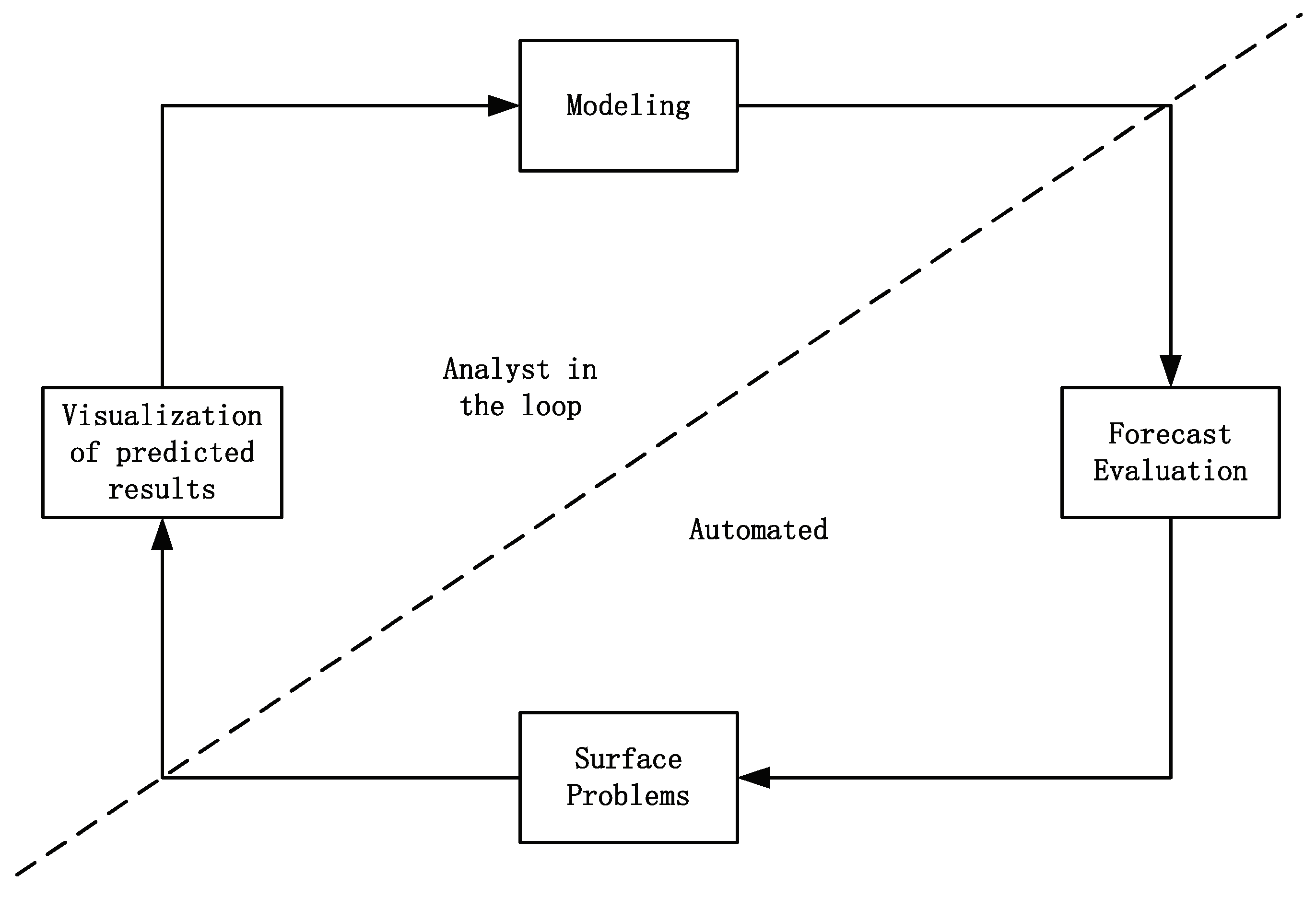
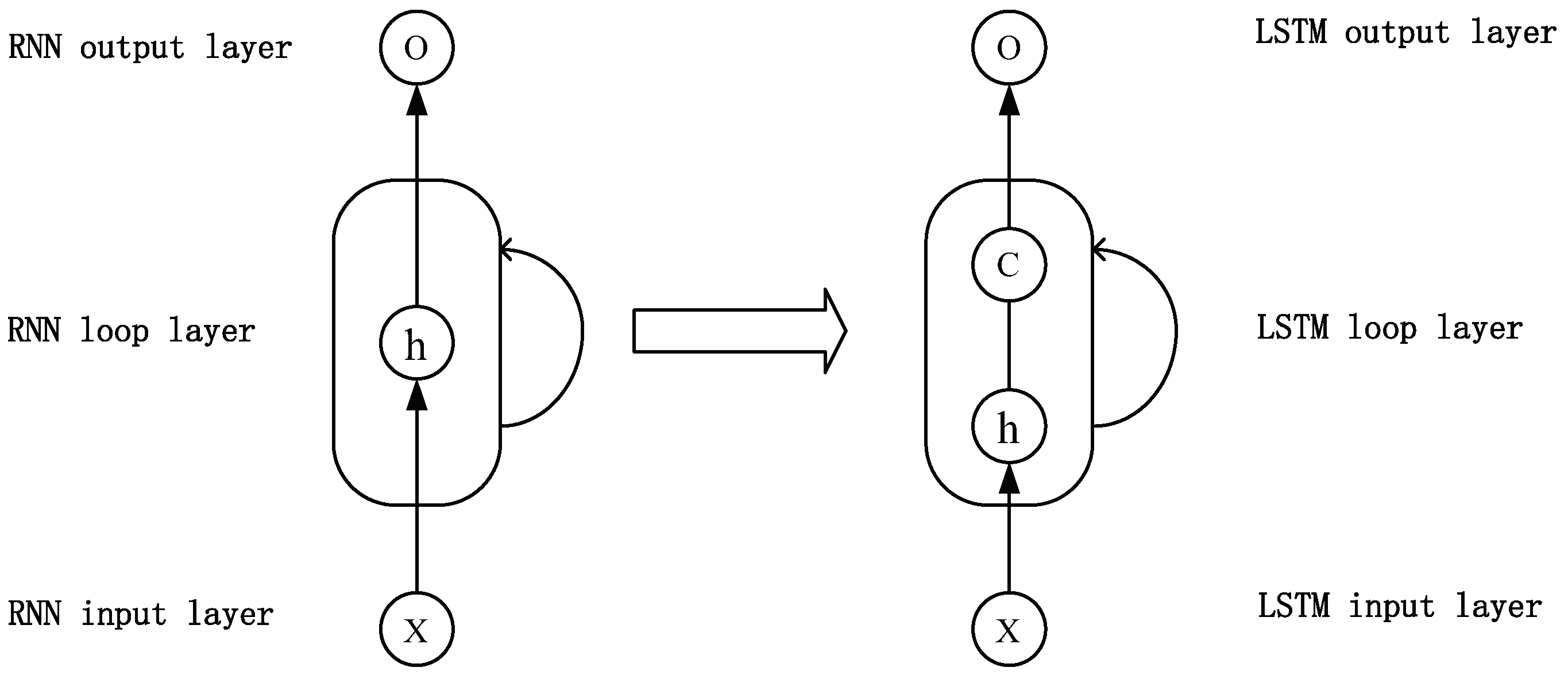

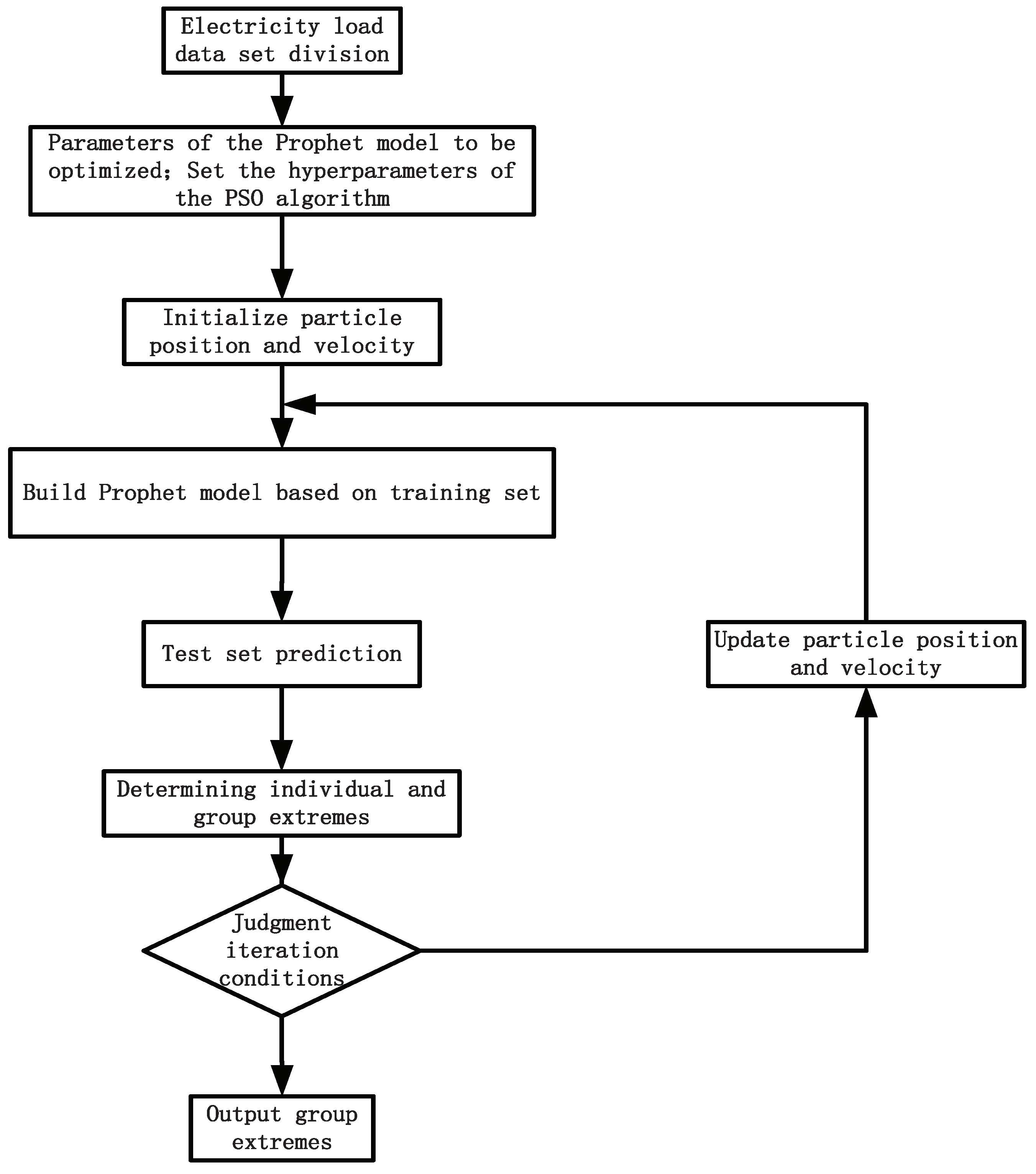

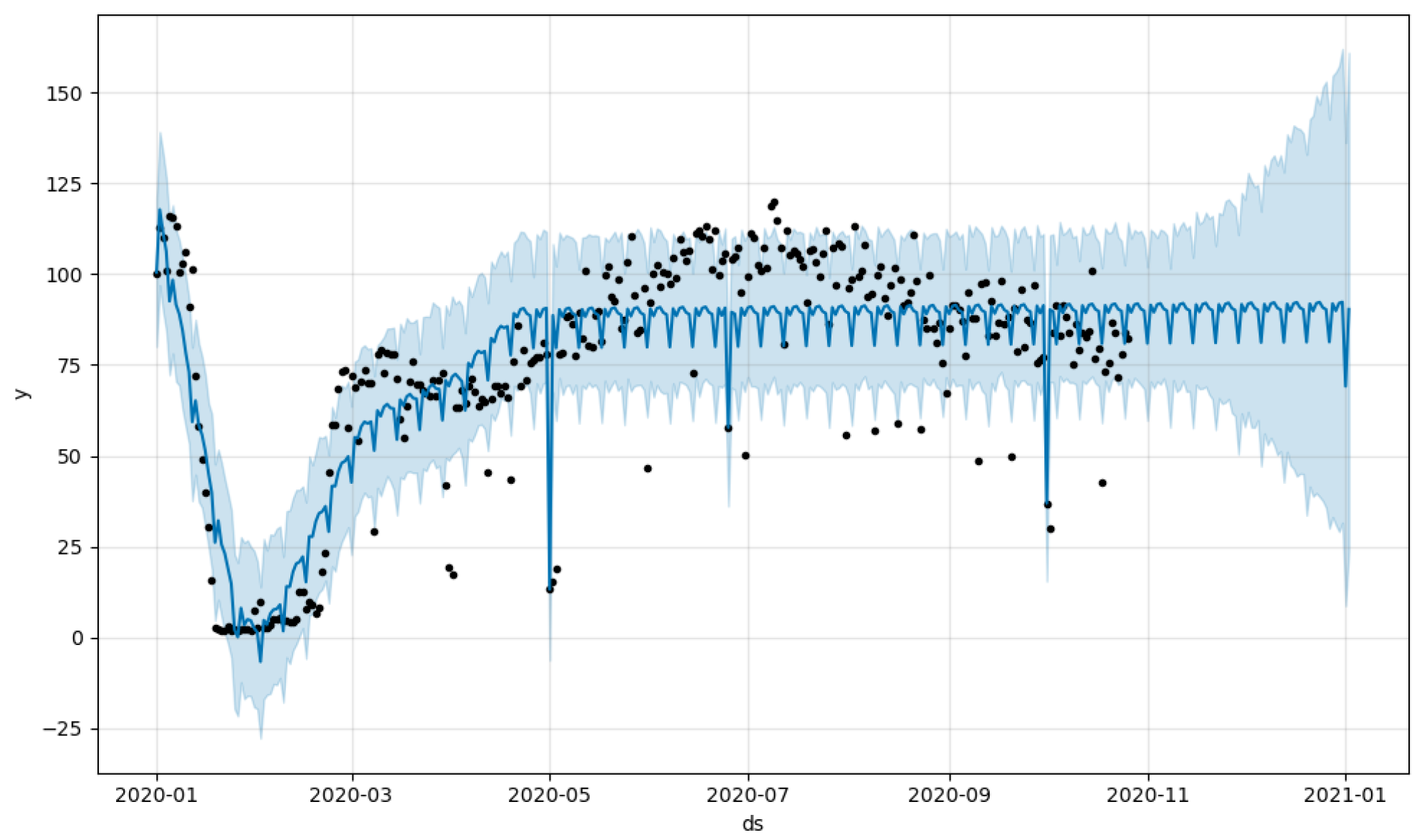

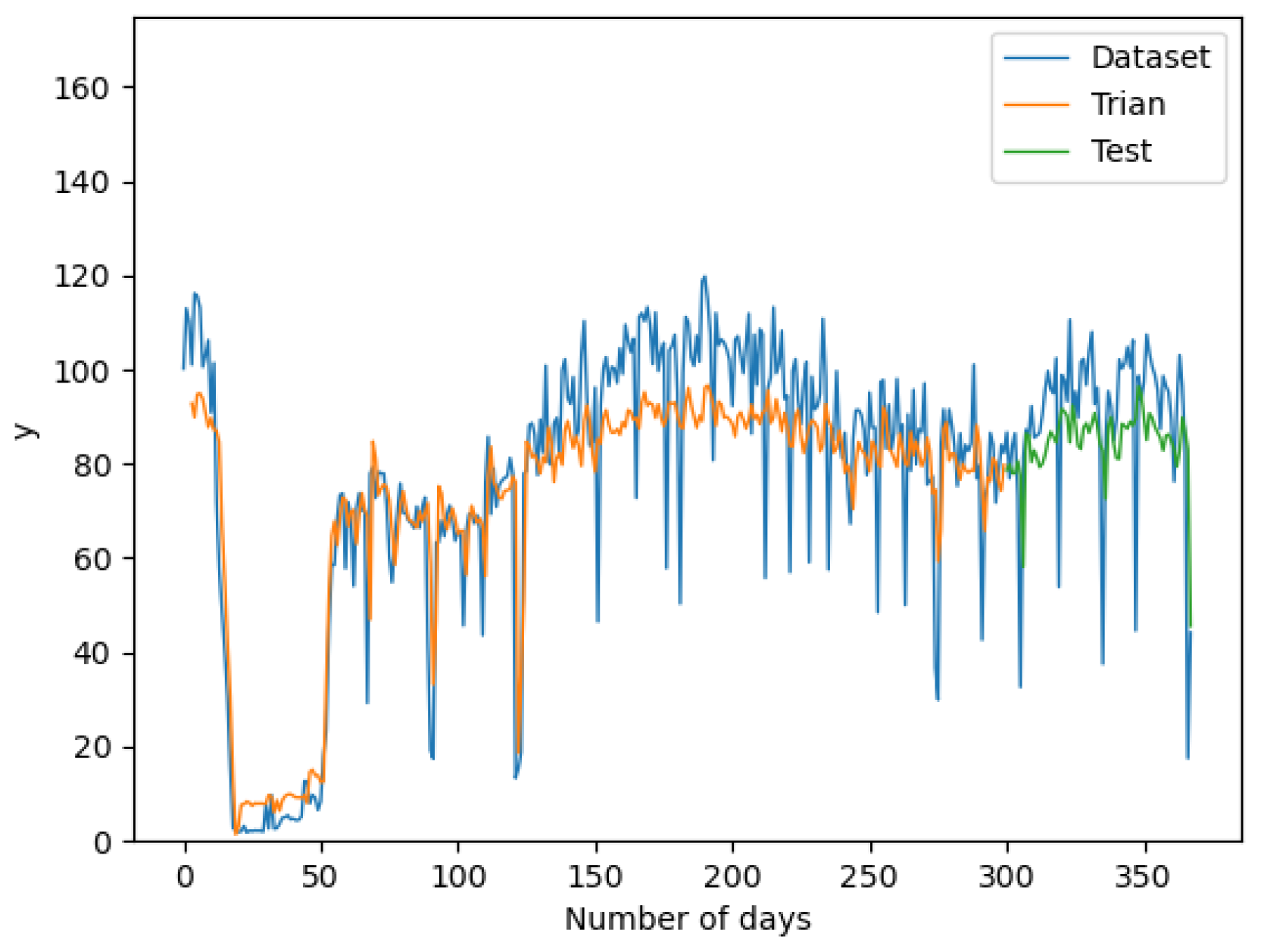
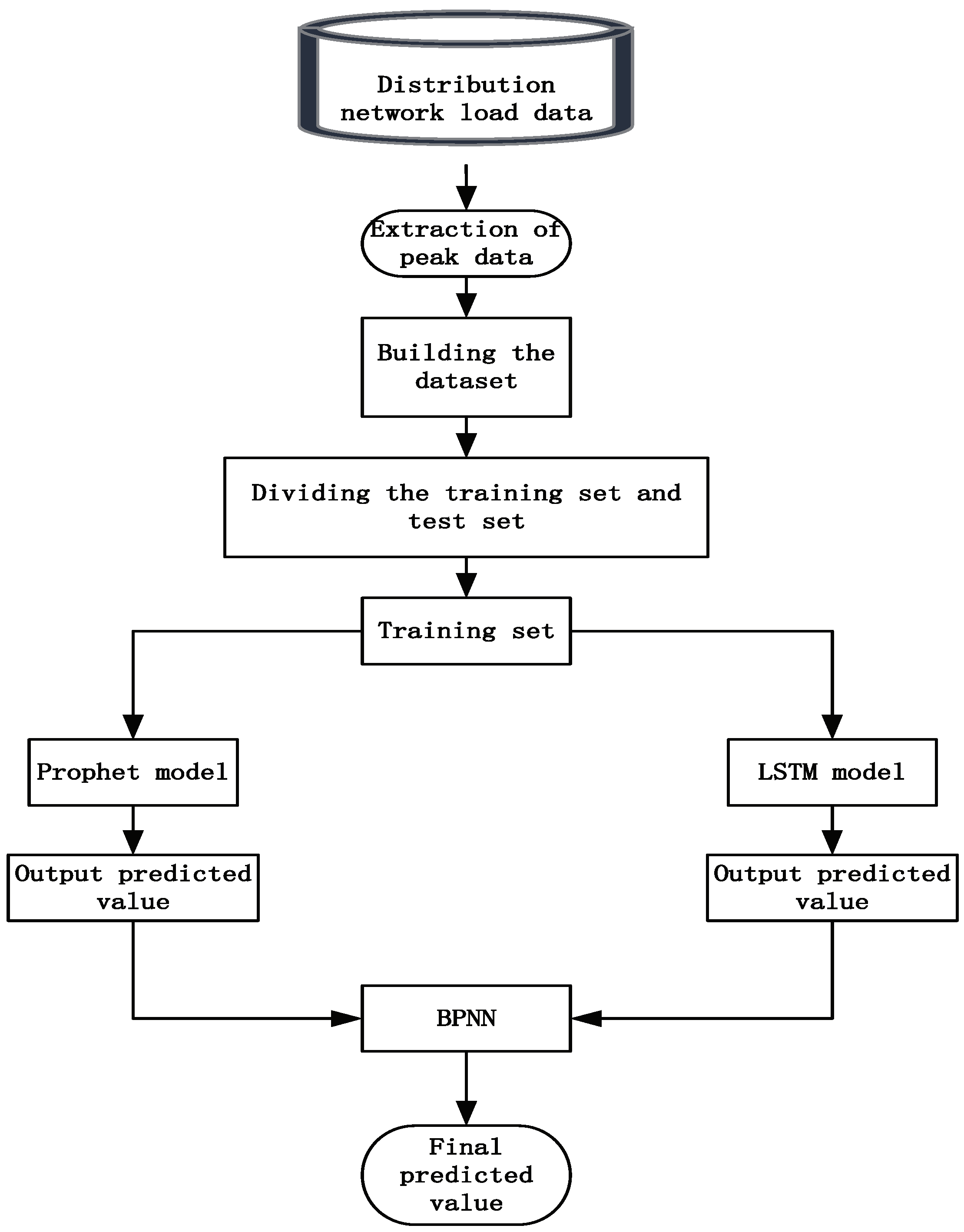


| Common Methods | Advantages | Disadvantages |
|---|---|---|
| Traditional forecasting methods (AR, MA, ARIMA) | The model is simple and the calculation is fast. | Low forecasting accuracy; unable to handle nonsmooth and nonlinear data better; poor fitting effect. |
| Machine learning (SVM, RF, EA) | The models are effective in dealing with nonlinear data. | The feature extraction capability is weak and the accuracy of prediction for highly random data is low. |
| Deep learning (RNN, LSTM, GRU, TCN) | The ability to cope with large-scale, high-dimensional, nonlinear load data and to predict future load conditions more accurately. | Deep learning algorithms have a large computational resource footprint and poor interpretation. |
| Parameters | Description |
|---|---|
| Number of populations | |
| Number of iterations | |
| Inertia weights | |
| Learning factors |
| Parameters | Description |
|---|---|
| Set the growth model; this paper is set to linear model (linear). | |
| Flexibility of the growth trend model. | |
| Set special dates and holidays. | |
| Analyze weekly seasonality of data. | |
| Set the number of potential variables. | |
| The location of the change point needs to be set in a time series as long as the first . |
| Model | MAE | RMSE |
|---|---|---|
| 15.74 | 19.26 | |
| 12.32 | 15.55 | |
| 11.67 | 15.45 | |
| 12.63 | 17.57 | |
| Transformer | 12.73 | 18.44 |
| Prophet-LSTM | 8.569 | 11.68 |
Disclaimer/Publisher’s Note: The statements, opinions and data contained in all publications are solely those of the individual author(s) and contributor(s) and not of MDPI and/or the editor(s). MDPI and/or the editor(s) disclaim responsibility for any injury to people or property resulting from any ideas, methods, instructions or products referred to in the content. |
© 2023 by the authors. Licensee MDPI, Basel, Switzerland. This article is an open access article distributed under the terms and conditions of the Creative Commons Attribution (CC BY) license (https://creativecommons.org/licenses/by/4.0/).
Share and Cite
Chen, Z.; Wang, C.; Lv, L.; Fan, L.; Wen, S.; Xiang, Z. Research on Peak Load Prediction of Distribution Network Lines Based on Prophet-LSTM Model. Sustainability 2023, 15, 11667. https://doi.org/10.3390/su151511667
Chen Z, Wang C, Lv L, Fan L, Wen S, Xiang Z. Research on Peak Load Prediction of Distribution Network Lines Based on Prophet-LSTM Model. Sustainability. 2023; 15(15):11667. https://doi.org/10.3390/su151511667
Chicago/Turabian StyleChen, Zhoufan, Congmin Wang, Longjin Lv, Liangzhong Fan, Shiting Wen, and Zhengtao Xiang. 2023. "Research on Peak Load Prediction of Distribution Network Lines Based on Prophet-LSTM Model" Sustainability 15, no. 15: 11667. https://doi.org/10.3390/su151511667
APA StyleChen, Z., Wang, C., Lv, L., Fan, L., Wen, S., & Xiang, Z. (2023). Research on Peak Load Prediction of Distribution Network Lines Based on Prophet-LSTM Model. Sustainability, 15(15), 11667. https://doi.org/10.3390/su151511667







